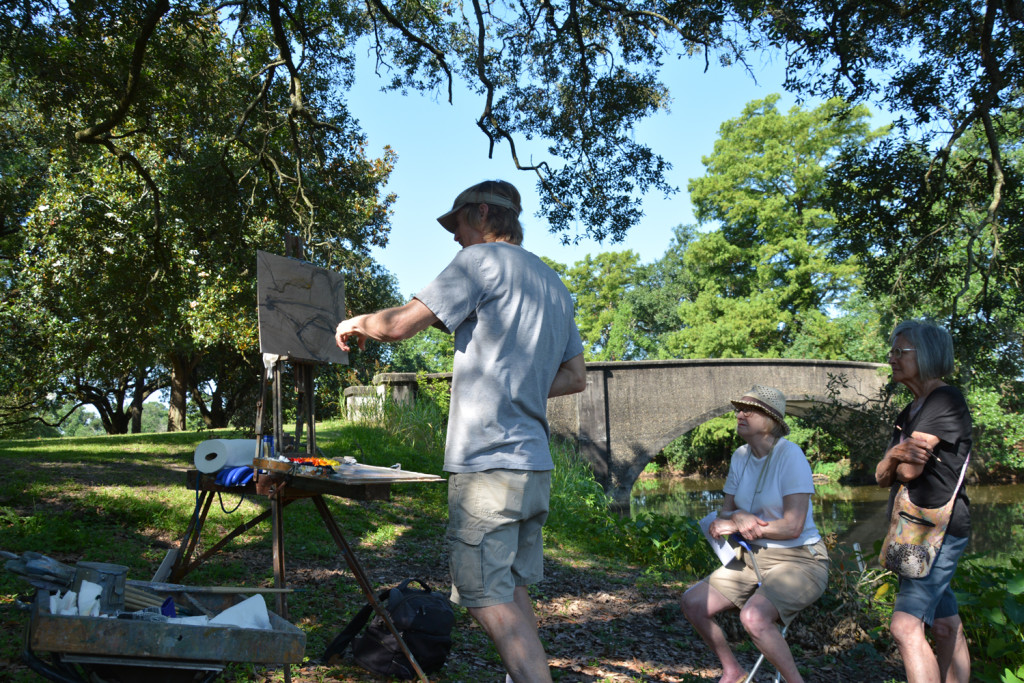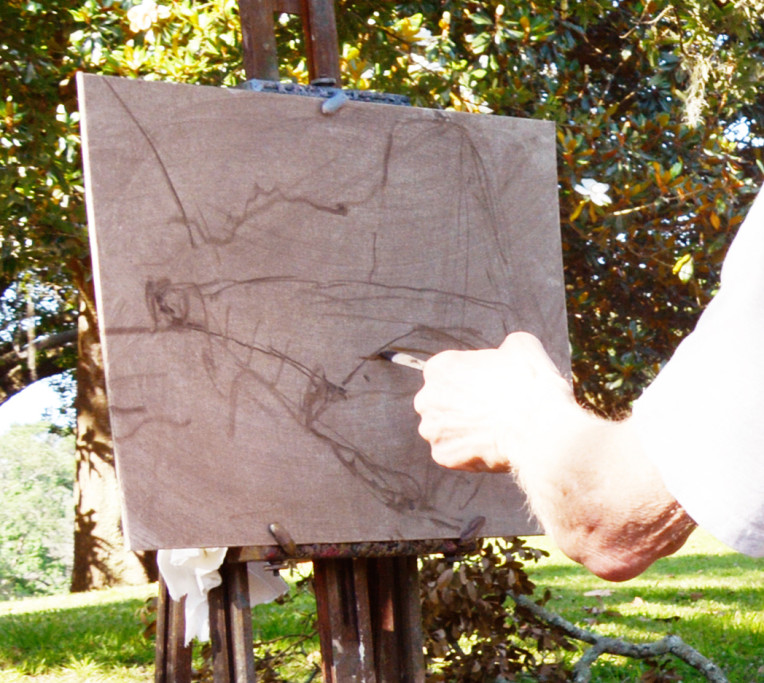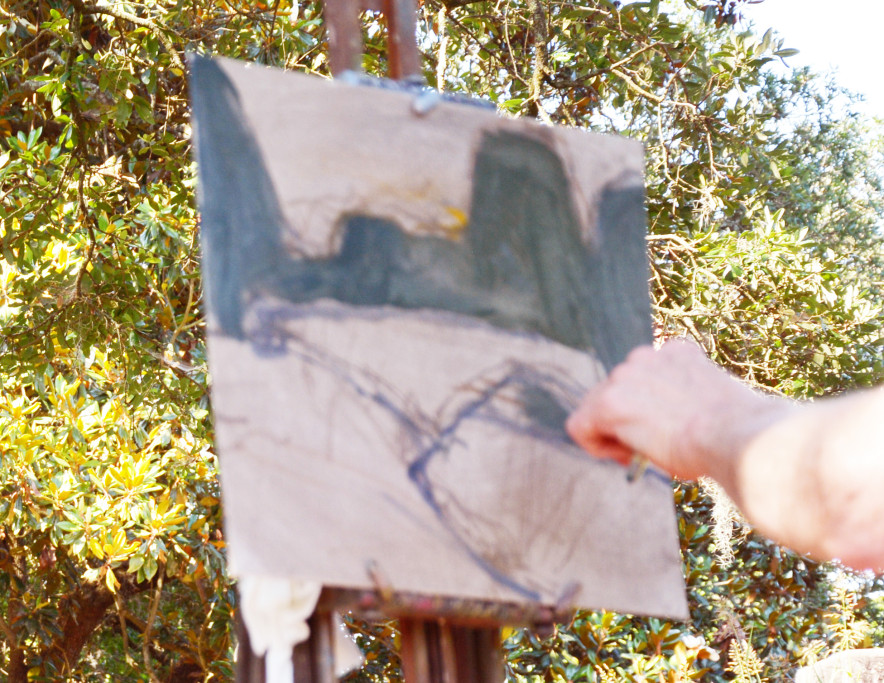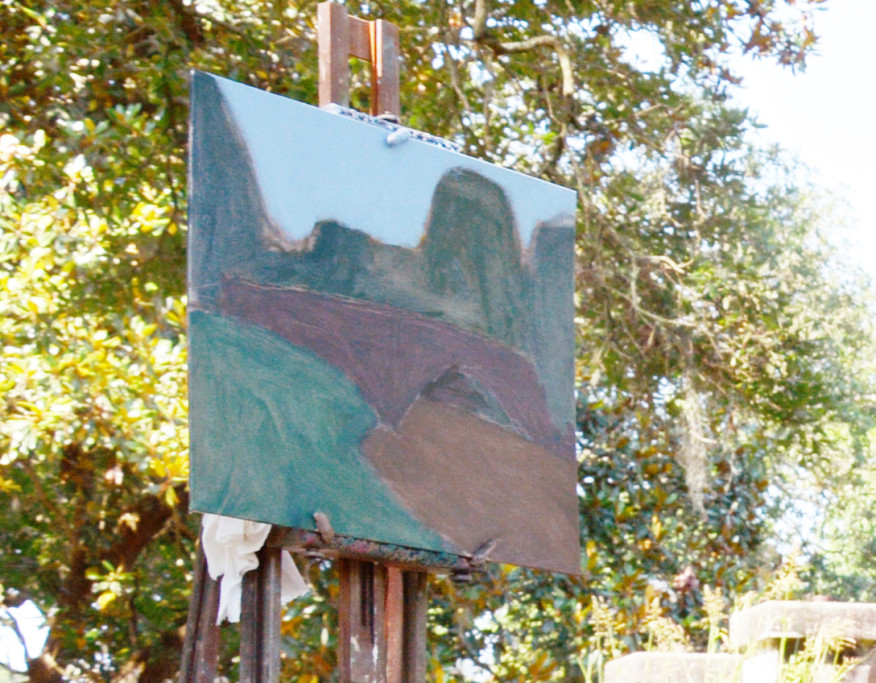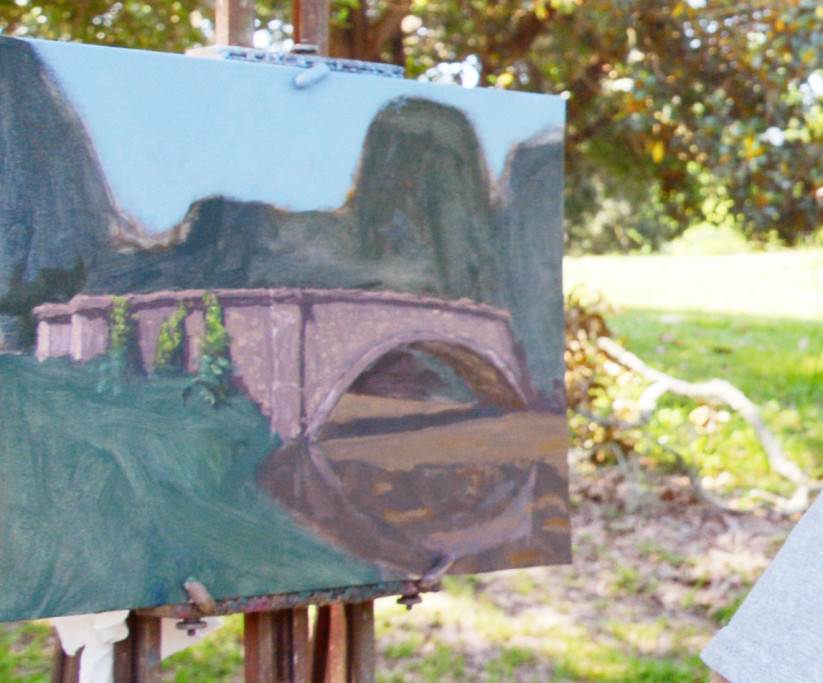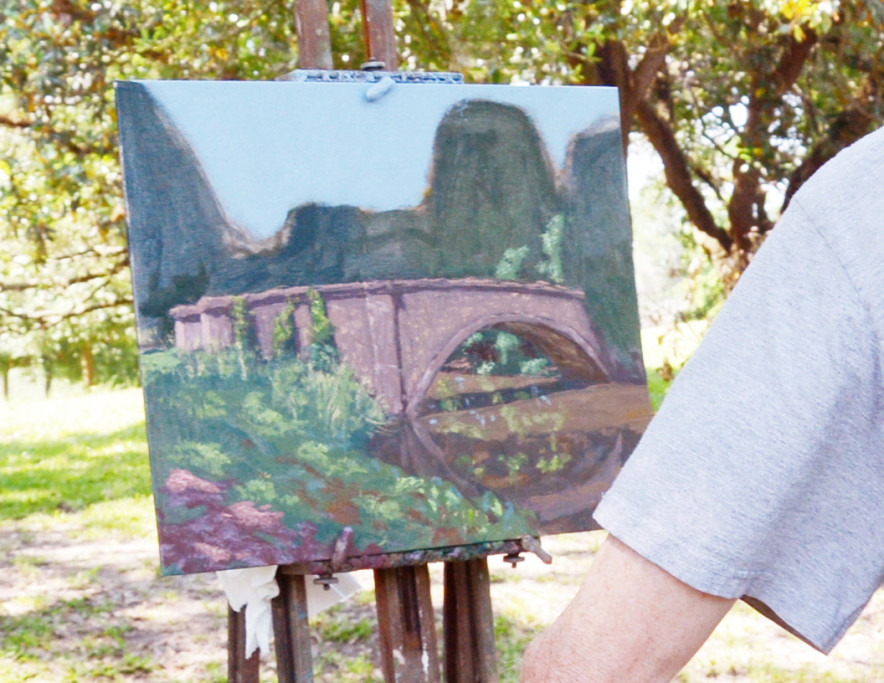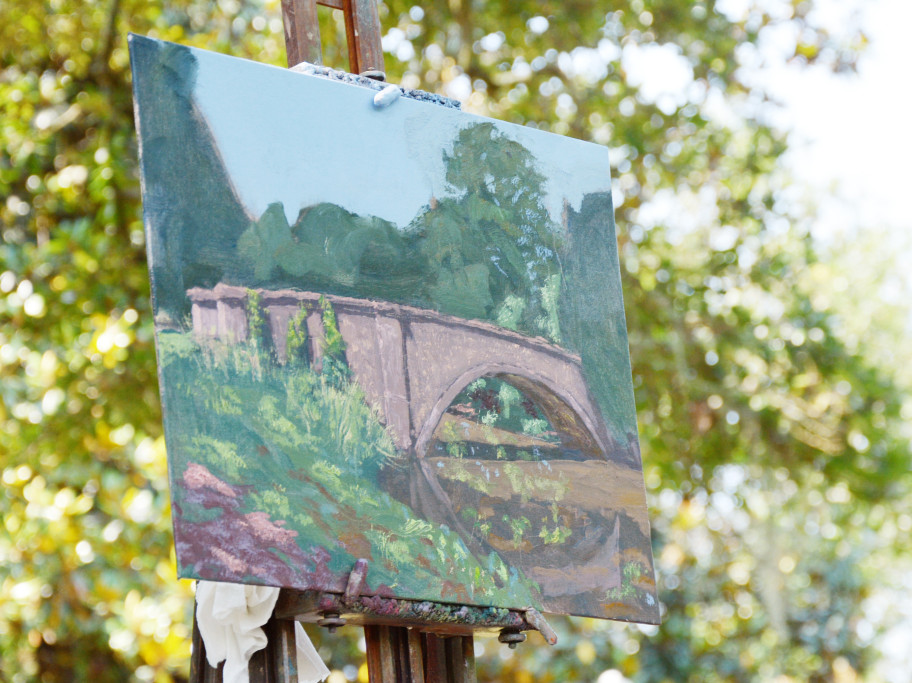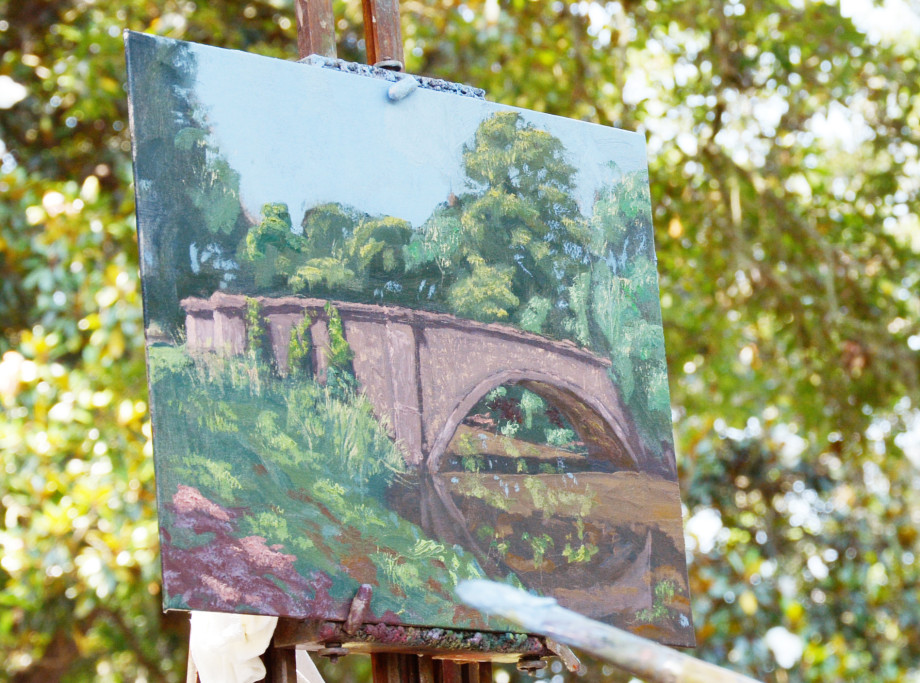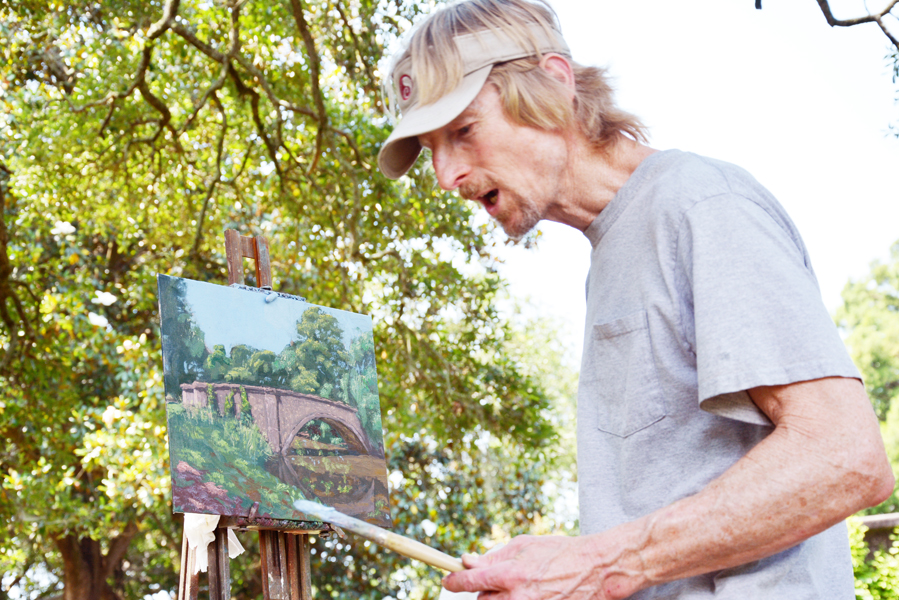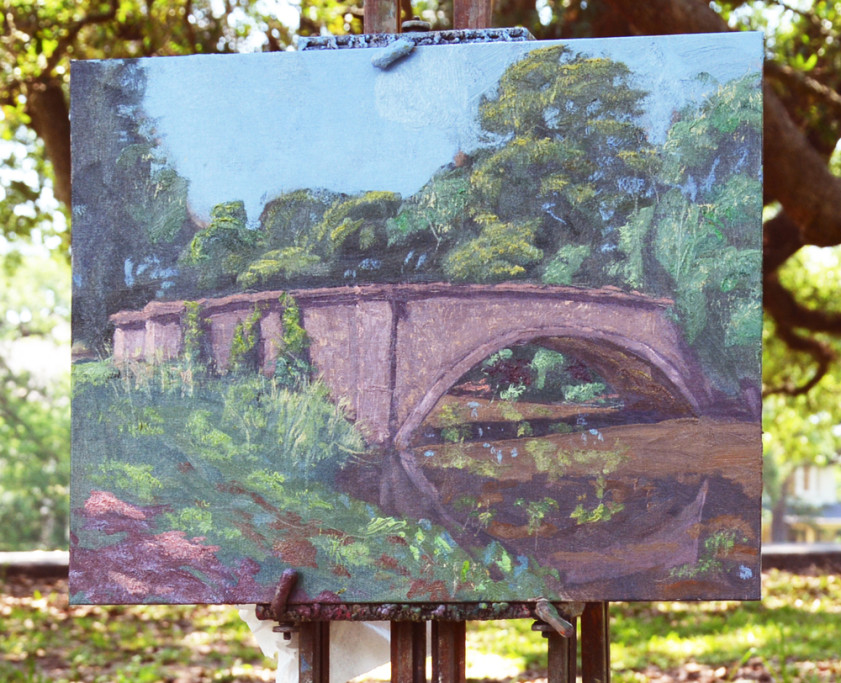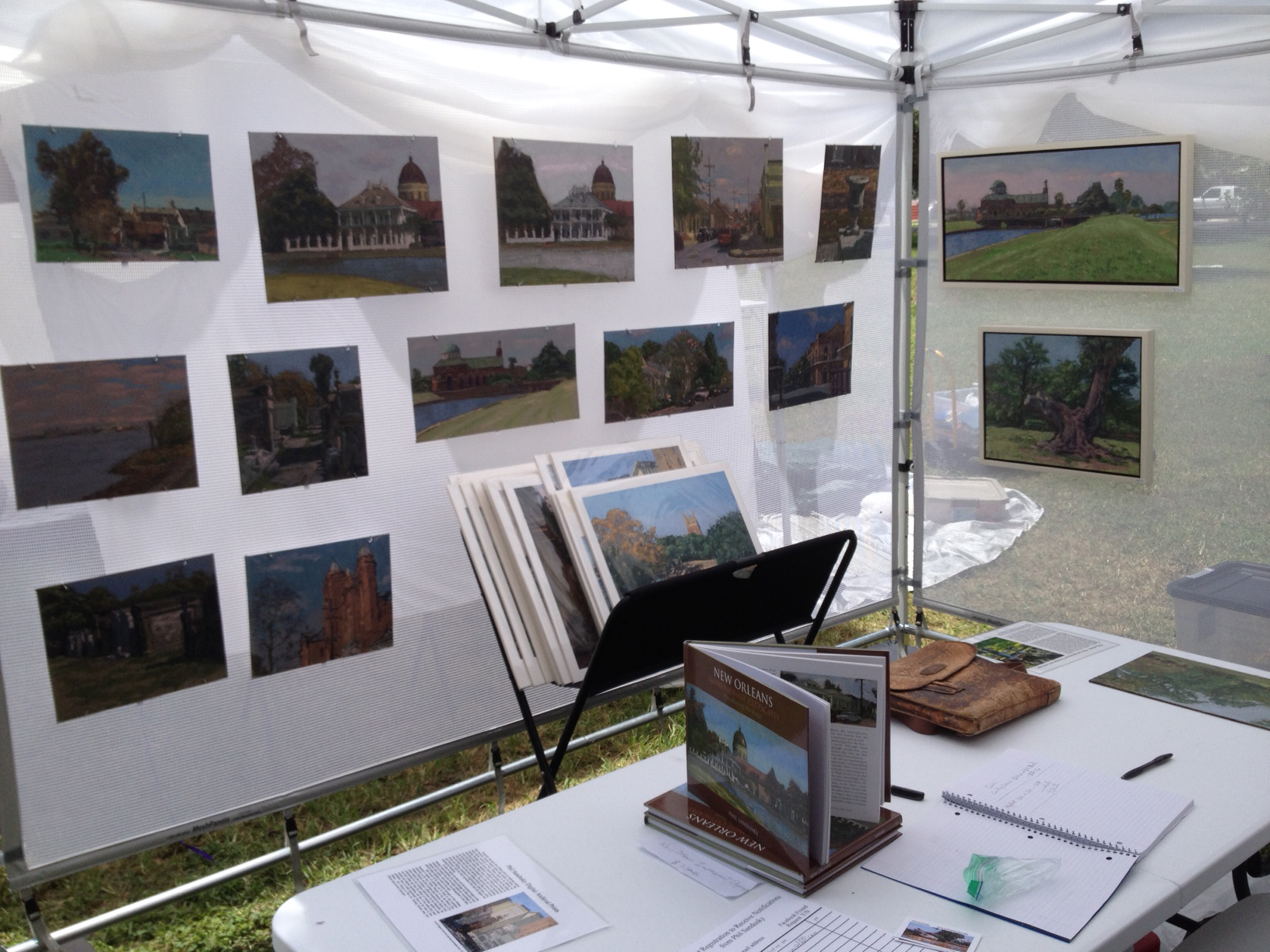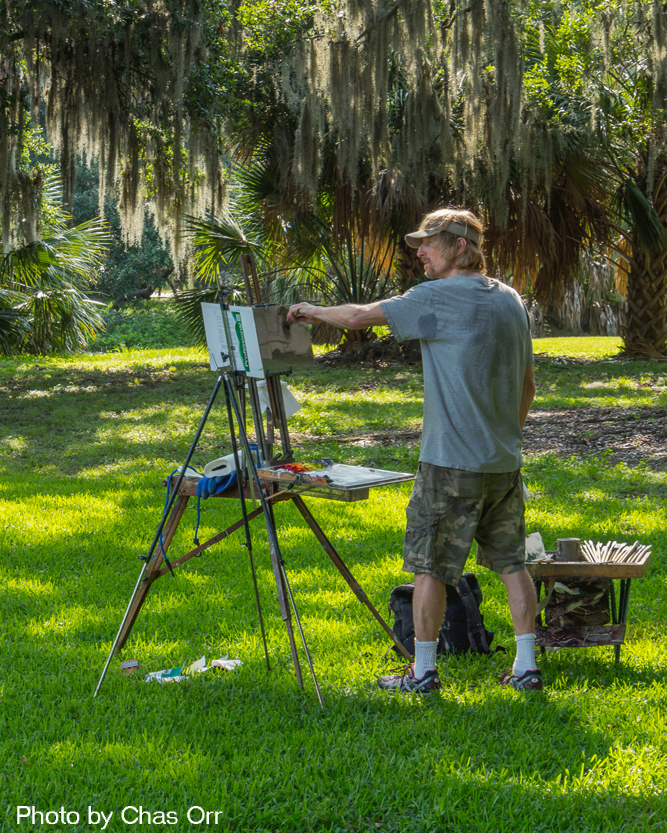On this page I’ll show painting demonstrations and also vision science presentations important for the lovers and makers of visual art. It’s important for aficionados of visual art to understand vision.
Scroll down to see my painting demonstrations and vision presentations. I’ll add to this page over time as often as I can.
Vision Presentation 1: The Temporal Nature of Vision and the Busbarn
I created the Animation below in 1998 to illustrate the temporal nature of our visual sensation and perception. Pardon its coarse transitions and lack of resolution. I used two different paintings I did of a view of Magazine Street in New Orleans looking toward the old Bus / Streetcar Barn before it was remodeled as a Whole Foods store. Both paintings were done on a partly cloudy summer day – one with the sun behind the clouds and one with the sun out. I made transitions between images of these paintings in Photoshop.
Rather than measuring color and value absolutely, our vision detects only spatial and time (temporal) changes in these quantities. As the animation starts, we are standing outside on a partly cloudy day with the sun shining out from behind the clouds, illuminating the surroundings with bright and warm colored sunlight. When the sun goes behind the clouds, at first the surroundings seem to become very dark and cool in color because our vision is contrasting this moment to the previous moment when sunlight prevailed. After a few seconds the effect of this time change in color fatigues and the view seems to become lighter and the cool cast that we see everywhere gradually gives way to our seeing more of a balance between warm and cool colors. Similarly, when the sun comes back out, at first we experience the jarring sudden transition by seeing a brilliant warm cast to the surroundings which again fatigues over time gradually to become darker and more balanced between warm and cool colors. These transitions have been sped up to heighten your awareness of them, but you can slow them down (or speed them up) my manually advancing the animation.
Click below:
Time_Partly_Cloudy_Effect_Bus_Barn
*
*
Painting Demo 2: Audubon Park Bridge
Thanks to my student Tommie Larsen for providing the good quality digital SLR images from which this demo presentation was extracted.
I zoomed in and cropped around the painting in the rest of the photos of this demo and increased the contrast in the mid-tones so that the canvas would not be lost in the shadows. This causes the area around the canvas (including my arm occasionally) to be a bit washed out.
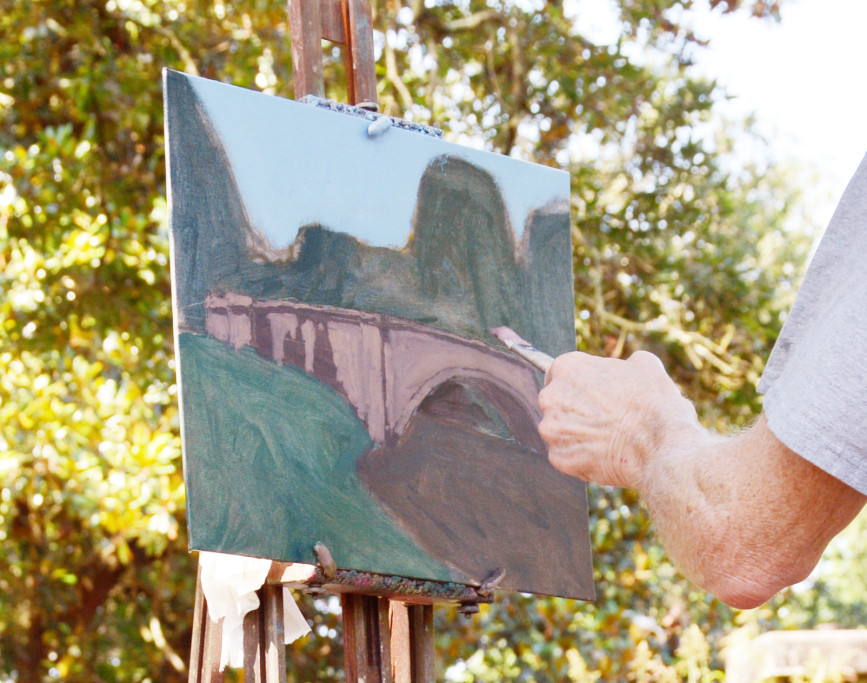
The glancing sunlight light is painted onto the bridge leaving out the underpainting color for the shadows.
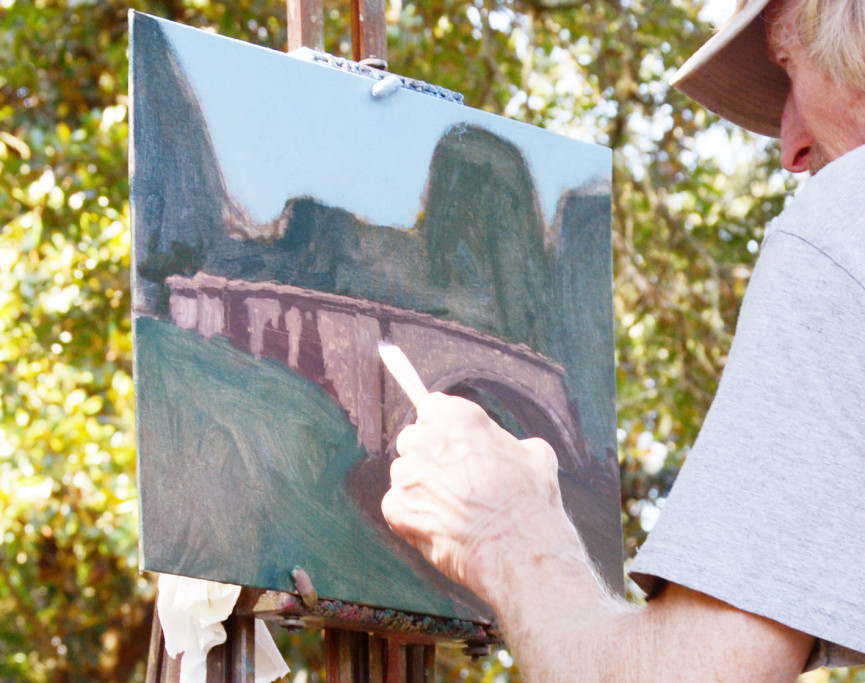
The direct sunlight is painted onto the bridge. I use a number 12 flat brush loaded with paint, to state the raking trickly highlights that play across the aggregate in the cement.
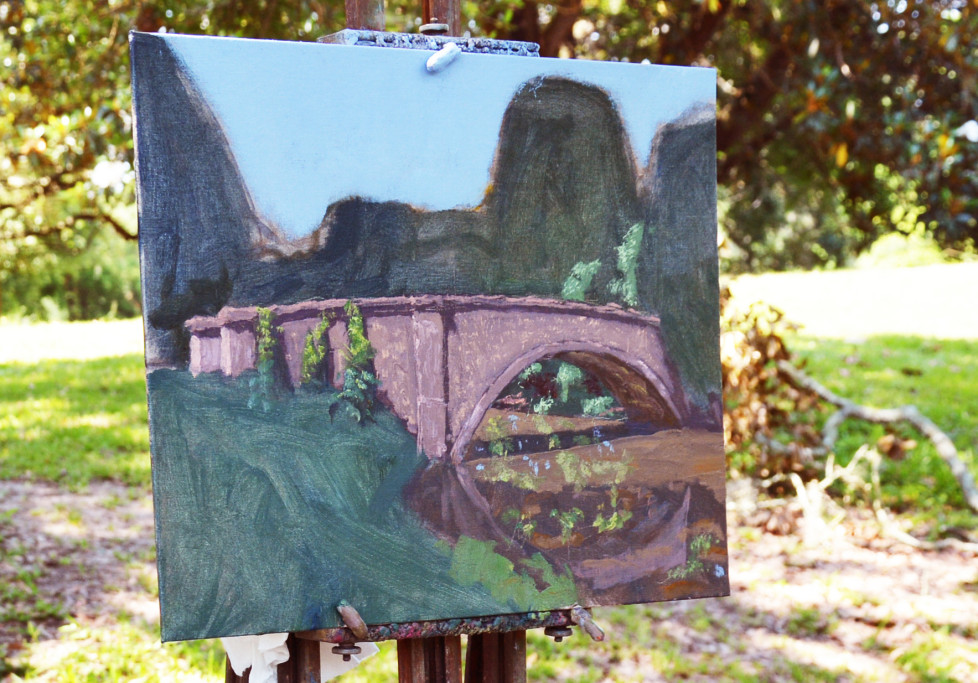
Halftones and lights are added to some of the foliage behind the bridge and patterns are painted in the water to represent the reflections of the bridge and foliage.
*
*
*
Painting Demo 1: Victorian House on St. Charles at Cherokee
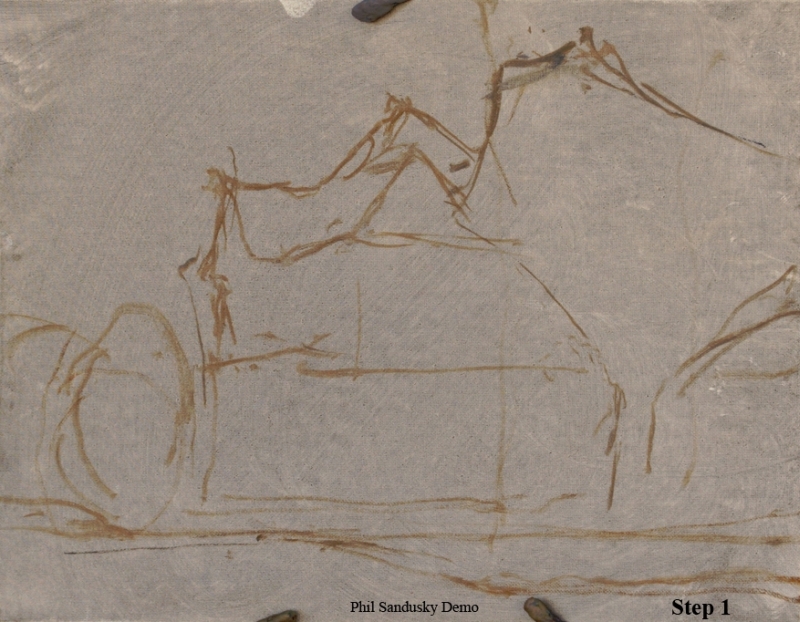
Step 1: I made a rough sketch on the canvas to work out the composition. Many artists would have produced a more intricate finished drawing on the canvas before starting to paint. But I’m against this illustrator’s approach, as its commonly referred to, because it compromises the painting for the drawing. An artist who makes an intricate drawing on the canvas before painting might use a good technique, working general to specific, or big to small, while doing the drawing, but will use small brushes and small brushstrokes from the very beginning of the painting process in order not to paint over the carefully articulated details of the drawing. While good technique might have been employed for the drawing, working big to small, a bad technique has been employed for the painting, working small to small. With respect to light, color, and pattern, the painting produced by this illustrators approach will often look stilted and lifeless. Thus an important guideline used by most painterly academic representational painters, including myself, is to never mix drawing with painting. This doesnt imply that drawing isn’t important in painting. You will constantly address the shape, relative position, and scale of patterns throughout the painting process, but those concerns will be integrated into the painting process not extracted and consolidated as a separate step.
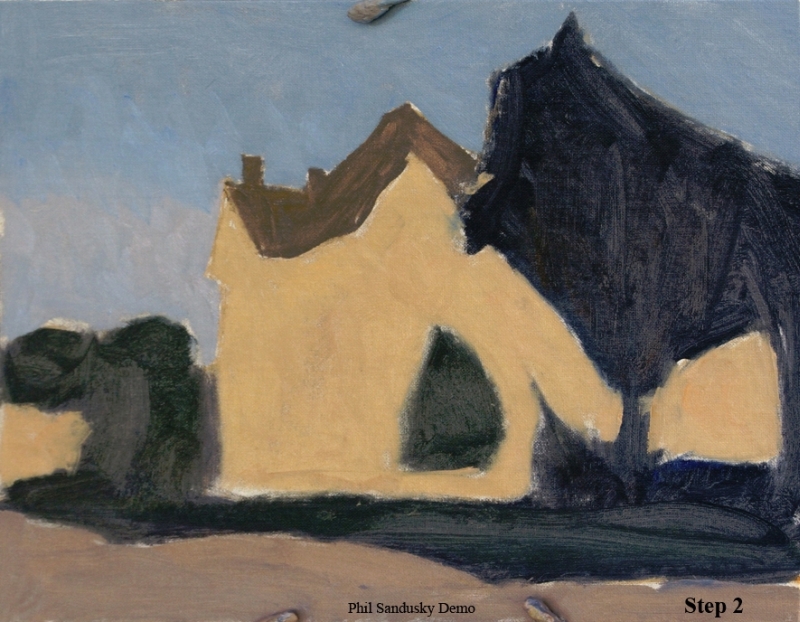
Step 2: The underpainting is produced. Three different colors are applied for the sky. Lights are applied for the road and a halftone is applied over all the light colored woodwork of the house. The color of the halftone used for the house is that of the glacing sunlight on the yellow weather boards. Darks are painted for everything else.
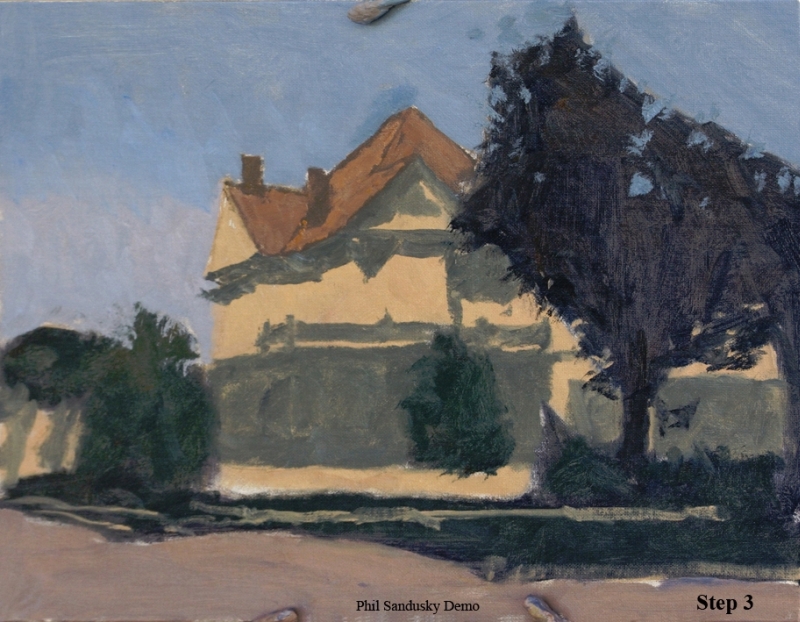
Step 3: Darks are applied over the underpainting for the house to articulate the cast shadows and to define the white woodwork. Lights are painted on the roof. Some lights are cut into the darks on the ground to articulate the sidewalk.
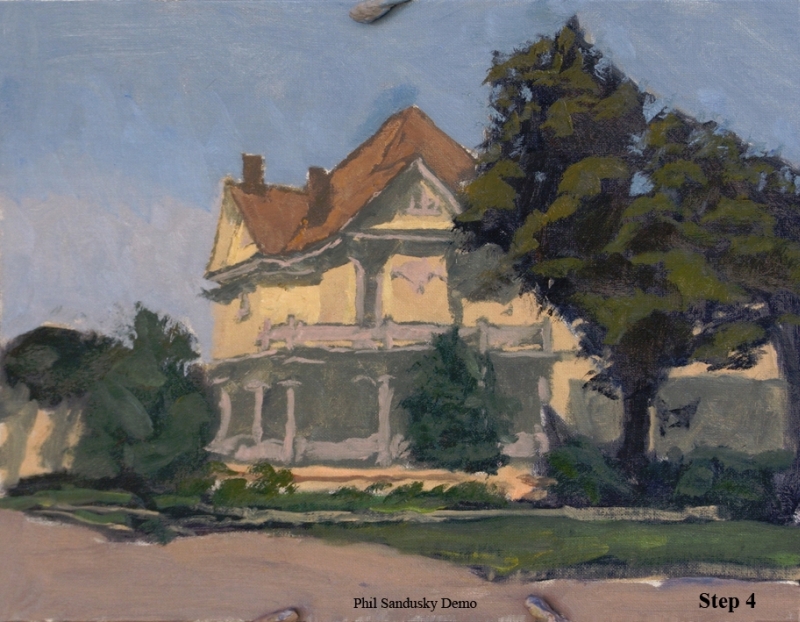
Step 4: Lights are painted over the darks on the house which represent the glancing lights on the white woodwork, but, for the time being, this same color is applied everywhere that sunlight hits the woodwork, including the facets where sunlight is hitting directly. The lights are painted over the halftones on the house corresponding to where direct sunlight hits the weather boards. Halftones are painted over the darks for the trees and greenery.
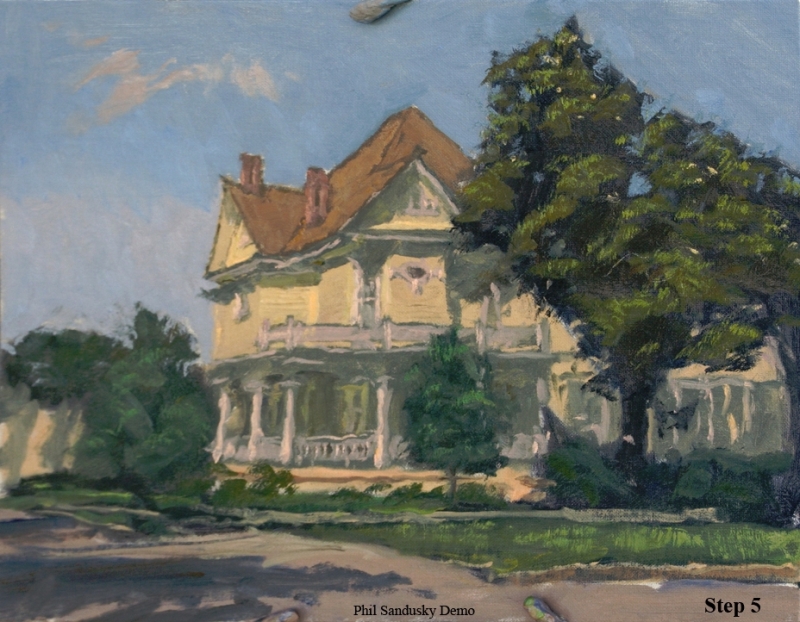
Step 5: Highlights are painted over the lights on the white woodwork for the facets catching direct sunlight. Variations are painted in the shadows of the house. Halftones are first painted on the darks for the chimneys and then lights are painted over the halftones. The lights and highlights are painted on the tree canopies and greenery. Cast shadows of a darker and lighter variation are painted over the lights on the road. This demonstration shows one way that a seemingly complex subject can be abstracted and stated simply and convincingly. I believe that simplification is the highest pursuit in representational painting as long as it is not motivated by fear or laziness.
